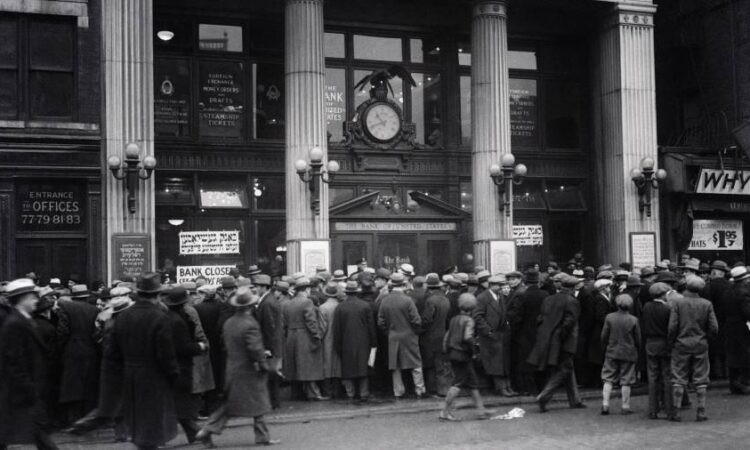
The writer is professor of business at Columbia Business School and a retired partner of Goldman Sachs
The recent closure of Silicon Valley Bank has some intriguing parallels with a failure more than 90 years ago. In 1930, the collapse of the curiously named Bank of United States — which was not a governmental entity — is widely believed to have been a major catalyst in turning the 1929 recession into the far more serious Great Depression.
Economists including Milton Friedman, Anna Schwartz and Ben Bernanke have written that the failure of the Federal Reserve to support Bank of United States had dramatic, unintended consequences on the national economy, the banking system and the future of regulation.
What was Bank of United States? Although it is little known today, in 1930 it was the largest commercial bank in the US by deposits and by customers, holding more than $268mn in savings and having more than 440,000 depositors. It mainly served the large immigrant communities of New York City, offering specialised services including translators, loans to small businesses, extended hours for working-class customers and the ability to transfer funds overseas.
The institution was among the first to open accounts for women and African Americans. Rebecca Kobrin, professor of history at Columbia University, has written extensively on the special role Bank of United States played in facilitating the business activities of first- and second-generation immigrants. These were mainly from eastern Europe and Italy, although the UK, Ireland and Scandinavia were also represented.
When it began to falter, officials at the Federal Reserve Bank of New York and leaders of the dominant financial institutions in the city argued against assisting Bank of United States. This was despite helping several other institutions in preceding weeks, as they had also done in the early 1920s.
According to Prof Kobrin, the reasons for failing to provide liquidity included antisemitism and anti-immigration sentiment. There also was an incorrect argument that a failure would have only local consequences. In the end, this bank was illiquid, not insolvent, and depositors ultimately received 93 cents on the dollar. But the economic damage had been done.
It is difficult to write definitively about Silicon Valley Bank as that situation is still very much in process. Even so, perhaps a few parallels may be drawn. First, both institutions focused their business on a clearly defined and concentrated group of customers. SVB knew its clients well, offering services that appealed to the venture capital community and tech entrepreneurs.
A century earlier, the customers of Bank of United States were attracted to services tailored to an immigrant population and the unusual name, which suggested great stability. But it was poorly diversified, with almost all of its customers located in New York City. Real estate dominated the loans it originated, roughly 45 per cent compared with 12 per cent for other New York-based banks. And it had overexpanded, often without proper accounting disclosures for acquisitions.
Second, the critical role each institution played in the broader economy was not fully appreciated. SVB was not limited to the geography suggested by its name, nor was the impact of Bank of United States limited by its New York City roots. In addition to the effects on the broader US economy, the failure of Bank of United States created problems for institutions in Europe and Asia that used its facilities to transfer funds and establish credit lines.
Third, the follow-on regulatory and legislative consequences are difficult to anticipate. It is believed that the dramatic damage done by the closure of Bank of United States had a telling effect on the then-governor of New York state, Franklin Delano Roosevelt. Many of the changes enacted by his presidential administration beginning in 1933 would have provided at least some relief during the dark days of the bank failures early in the Great Depression. Ultimately, depositors received legal protections, bank examiner staffs were enhanced and diversification in the deposit base and loan portfolios was encouraged.
Silicon Valley Bank is still being unwound, and the fallout will take some time to be fully understood. Regulators and Congress are sure to have much more to say and do. For example, will there be a move towards more robust regulation as occurred in the 1930s? In the meantime, we are reminded that the banking system is heavily dependent on the confidence of its participants. Transparency and reliable information flow are critical elements of this.






